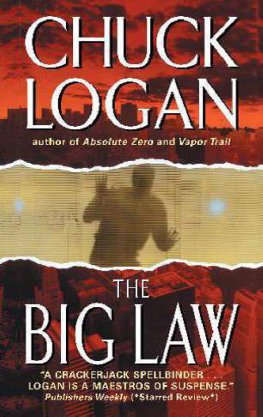Lincoln Child
The Forgotten Room
It was perhaps the most unusual sight ever beheld on the august and stately grounds of the Glasgow Institute of Science, founded in 1761 by grant of charter from George III. A large podium, studded with microphones, had been erected on the Great Lawn, directly in front of the administration building. Before it had been set some three dozen folding chairs, on which sat reporters from local newspapers, the Times of London, Nature, Oceanography, Time magazine, and a host of others. To the right of the podium were two television cameras, one from the BBC and the other from CNN. To the podiums left was a large wooden scaffold, upon which sat a large, strange-looking machine of dark metal: a cross between a cigar tube and a pincushion, about thirty feet long, with a bulky attachment protruding from its upper edge.
The restless chatter among the reporters grew muted as the main doors to the administration building opened and two men stepped out into the September afternoon sunlight. One was plump and short, with a shock of white hair and wearing a thick tweed coat. The other was tall and quite thin, with rather severe features, light brown hair, and alert gray eyes. Unlike the first man, he was dressed in a conservative dark suit.
The two approached the podium and the older man cleared his throat. Ladies and gentlemen of the press, he began, thank you for coming. I am Colin Reed, provost of the Glasgow Institute of Science, and to my right is Jeremy Logan.
Reed took a sip from a glass of water on one side of the podium, cleared his throat again. You may well know of Dr. Logans work. He is perhaps the only, and certainly the preeminent, enigmalogist operating in the world today. His job is to investigate, interpret, and explain the for lack of a better word unexplainable. He throws light upon riddles of history; he separates myth from truth and the natural from the supernatural.
At Reeds side, Jeremy Logan frowned slightly, as if uncomfortable at this bit of panegyric.
About two months ago, we contacted Dr. Logan on his home ground of Yale University and asked him to undertake an assignment for us. That assignment can be briefly explained: to definitively prove, or disprove, the existence of the creature popularly referred to as the Loch Ness monster. Dr. Logan has spent the last six weeks in Inverness, doing precisely that. I will now ask him to share his findings with you.
Reed stepped back from the microphones and Logan approached. He surveyed the crowd of reporters for a moment, then began to speak. His voice was relatively low and mild, the mid-Atlantic accent contrasting with Reeds Scottish burr.
The Loch Ness monster, he began, is the most famous of all the supposed Scottish lake monsters, perhaps the most famous of all cryptids. The institutes aim in hiring me for this particular task was not to stunt the local tourism industry or to put peddlers of Loch Ness iconography out of business. Rather, it was to put a stop to the amateur and misguided attempts at searching for the creature attempts that have been on the increase recently and, at least twice in the last year, have resulted in deaths by drowning.
He took a sip from his own water glass. I quickly realized that proving the existence of the creature required only one thing observing it in its element. Proving that the creature does not exist, however, would require a great deal more work. Technology would be my greatest ally. Hence I persuaded the United States Navy, of which I was once a part, to lend me this one-man research submersible. And Logan waved at the strange-looking machine sitting on the wooden scaffold to his right. The submersible is equipped with continuous-wave radar, synthetic aperture sonar, pulse-compression echolocating devices, and numerous other technologies for both underwater mapping and target acquisition.
There were two important factors to take into account. First, the Loch is quite long and unusually deep seven hundred and fifty feet in places. Second, so-called sightings of the creature suggested a morphology similar to a plesiosaur, which would put it at something between twenty and forty feet in length. There were several unknown variables to contend with, of course, such as the creatures range of movement and environmental preferences, but these could not be determined until such time as it was located.
I began by familiarizing myself with the features of the submersible and the layout of the loch both above and below the surface. My service in the navy made the former relatively straightforward. I spent one week in this shakedown period, during which time I uncovered no sign of the creature.
Next, I had the institute procure for me some netting rather a lot of netting, in fact. Using spools of military-grade nylon mesh, we put together a net ten thousand feet by eight hundred feet.
This brought murmurs of surprise.
What came next was rather tedious but after the first few run-throughs quite straightforward. I was lucky in the fact that the loch, although some twenty miles long, is not particularly wide: just under two miles at its widest point. We started at the northernmost point of the loch and worked south. My work was aided by two research assistants from the institute and two motor launches out of Inverness. Each day, using the submersible, I would comb an area of the loch consisting of a single mile in a southerly direction. A mile-long slice of the loch, as it were, along the x, y, and z axes. For each of these discrete slices, I would make three separate passes at different depths, using the submersibles movement and targeting technologies to search for any objects the size of the creature. This equipment has significant range and precision; had any object of the requisite size been in the slice, I would have located it. At the end of each day, with the help of the research assistants one on each shore of the loch and the two boats on the loch itself, I moved the netting one mile forward, to the terminal point of my search for that day. This vast mesh covered the entire loch laterally, like an antisubmarine net. The mesh was broad enough for any normal fish to swim through without difficulty, but narrow enough to prevent anything larger than forty centimeters wide from passing. Watercraft were dealt with on a one-by-one basis.
Each day I explored an additional one-mile slice of the loch, searching for the creature. At the end of each day, as mentioned, we pulled the net forward another mile. After twenty days we reached the southern end of the loch without result. And so, ladies and gentlemen, you can take as fact the four words Im about to speak though I speak them with some regret, since I enjoy cryptozoological legends as much as the next man: There aint no Nessie.
This was greeted with applause, a scattering of laugher.
A low sound became audible in the distance: a droning, repetitive thudding. As the sound drew closer, it became identifiable as helicopter blades cutting through the air. Then a fat chopper with military markings appeared over a nearby hilltop lined with redbrick row houses. It approached quickly now an American navy aircraft then descended, hovering directly over the Great Lawn and the dark gray submersible. Grass flattened out in a circular direction, and the reporters were forced to grab hats and papers to prevent them from flying. A technician in a jumpsuit trotted out a side door of the administration building, climbed up the wooden scaffolding, and attached two huge hooks that had been reeled out of the helicopters belly onto fastenings on the upper surface of the submersible. He crawled back down, gave a thumbs-up, and the helicopter began to rise gingerly, the craft swaying beneath it. Higher and higher it climbed, and then it turned slowly and began heading eastward, its peculiar cargo trailing behind it by the two lifelines. Within sixty seconds it was gone. The entire operation had taken less than five minutes.
















